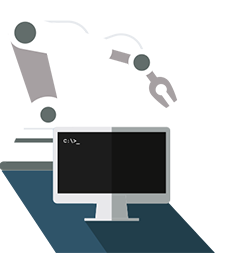New publication on Maintenance via remote access – IT-security aspects
Read more: https://www.safe-machines-at-work.org/control-devices
Read more

Artificial intelligence (AI) methods are used primarily to perform highly complex tasks, for example for the processing of natural language or the classification of objects in images. The methods not only enable substantially higher levels of automation to be attained, but also open up completely new fields of application.
The term "artificial intelligence" is now used primarily in the context of machine learning, for example in neural networks, decision trees or support vector machines. However, it also covers a large number of other applications, such as expert systems or knowledge graphs.
A feature common to all these methods is their ability to solve problems by modelling concepts that are generally associated with intelligent behavior. The use of artificial intelligence enables concepts such as learning, planning, sensing, communicating and cooperating to be transferred to technical systems. With these capabilities, completely new intelligent systems and applications can be achieved. Artificial intelligence is therefore often seen as the key technology of the future.
Protective devices and control systems based upon artificial intelligence have already enabled fully automated vehicles and robots to be created. Furthermore, they enable accidents to be prevented by assistive systems capable of recognizing hazardous situations.
The use of AI algorithms also opens up new opportunities for occupational health and safety to make workplaces even safer. Dangerous work processes, for example, could be automated. In many monitored hazardous areas, more efficient data evaluation enables an enhanced and faster response to potential hazards.
AI algorithms are also used for predictive maintenance of machines. They help to evaluate collected data that are relevant for the maintenance of a machine. Both historical and real-time data are analyzed in this context. In addition, the AI algorithms used attempt to learn from the existing data and calculate predictions for the occurrence of future events.
For occupational health and safety, predictive Maintenace can lead to a reduction in occupational accidents in the long term, which are due to fatigue of materials used. However, this requires a correct analysis of the data, which does not deteriorate over the life cycle. Furthermore, it must be ensured that a hacker is not able to influence the evaluation of the AI algorithm. For example, an attacker could change reference images that are continuously used to validate the results.